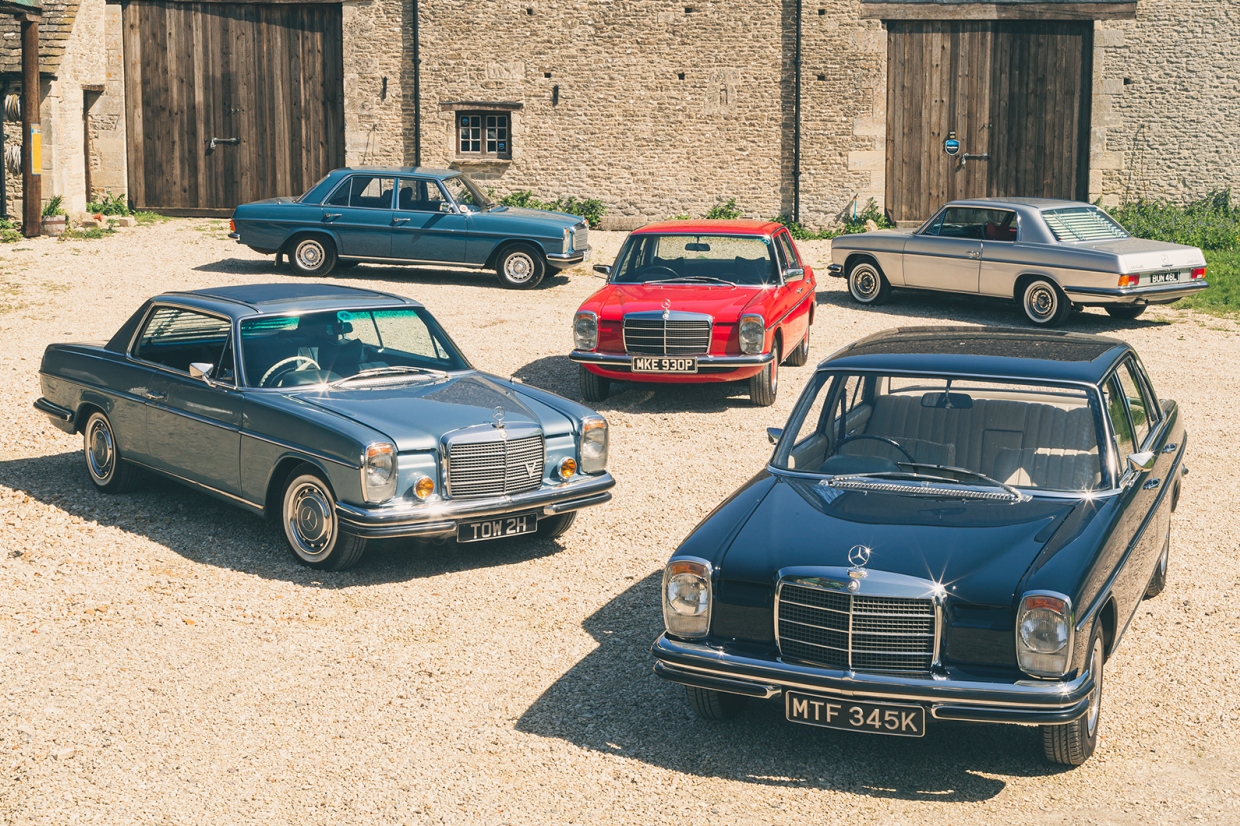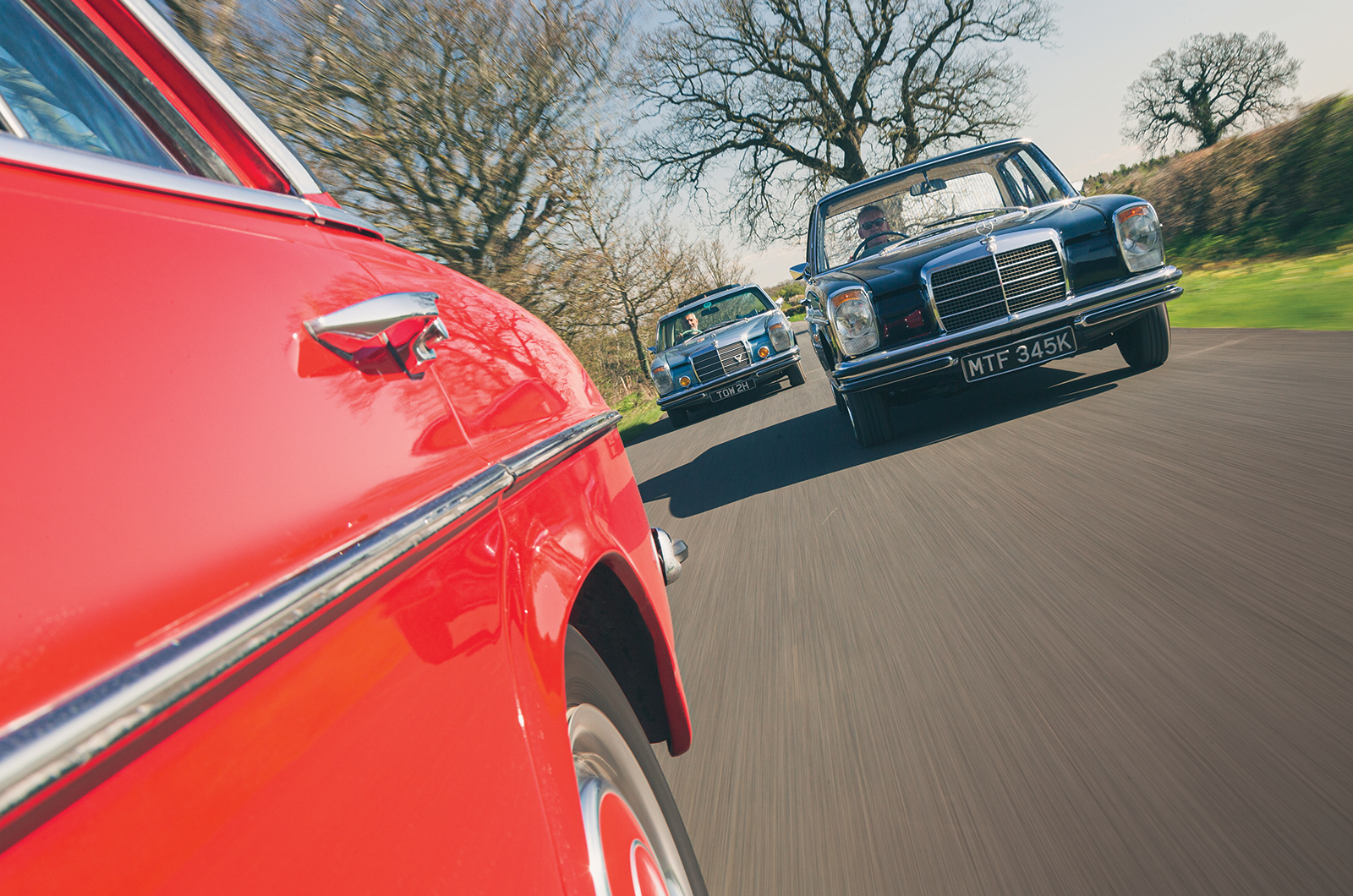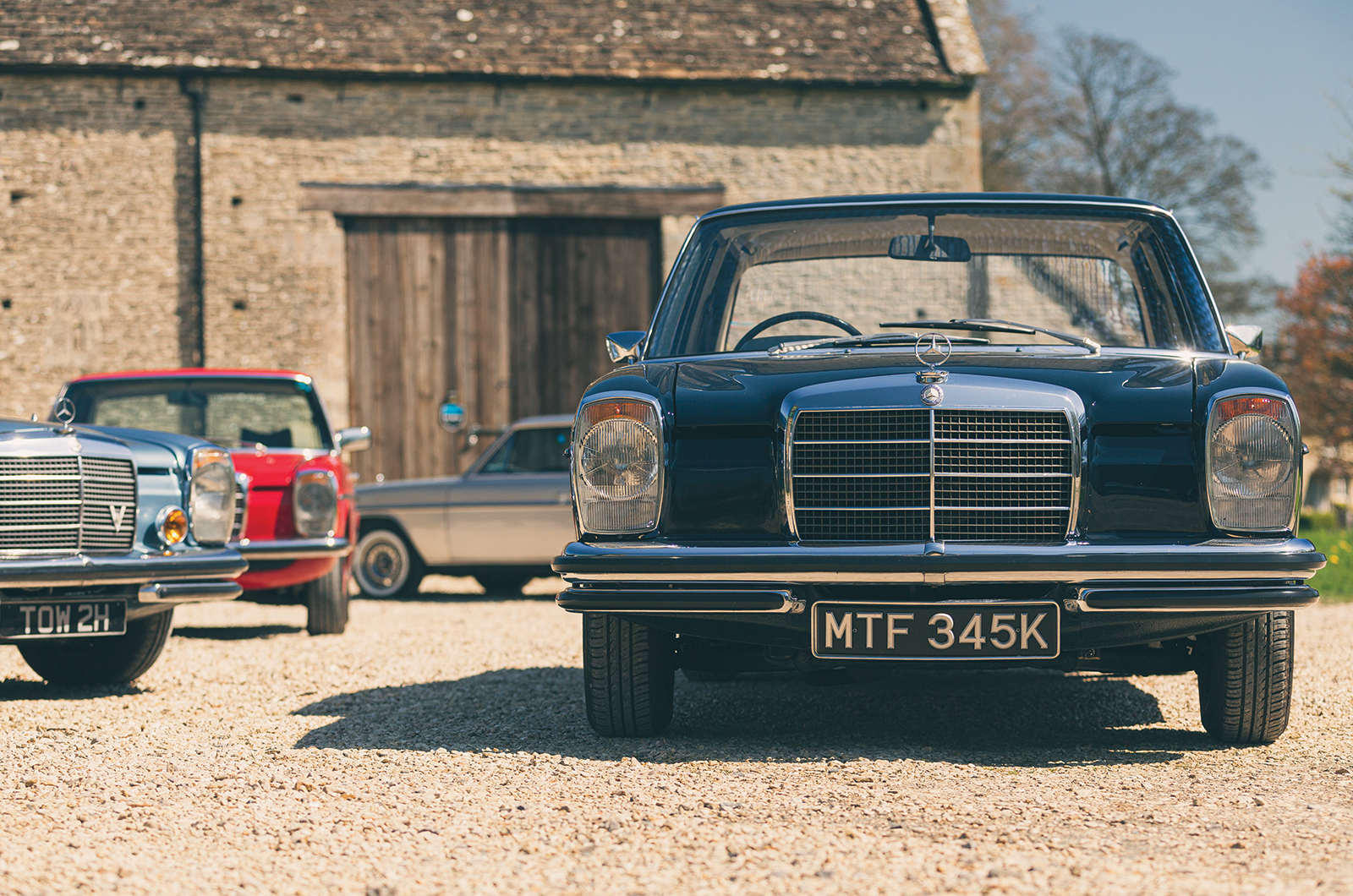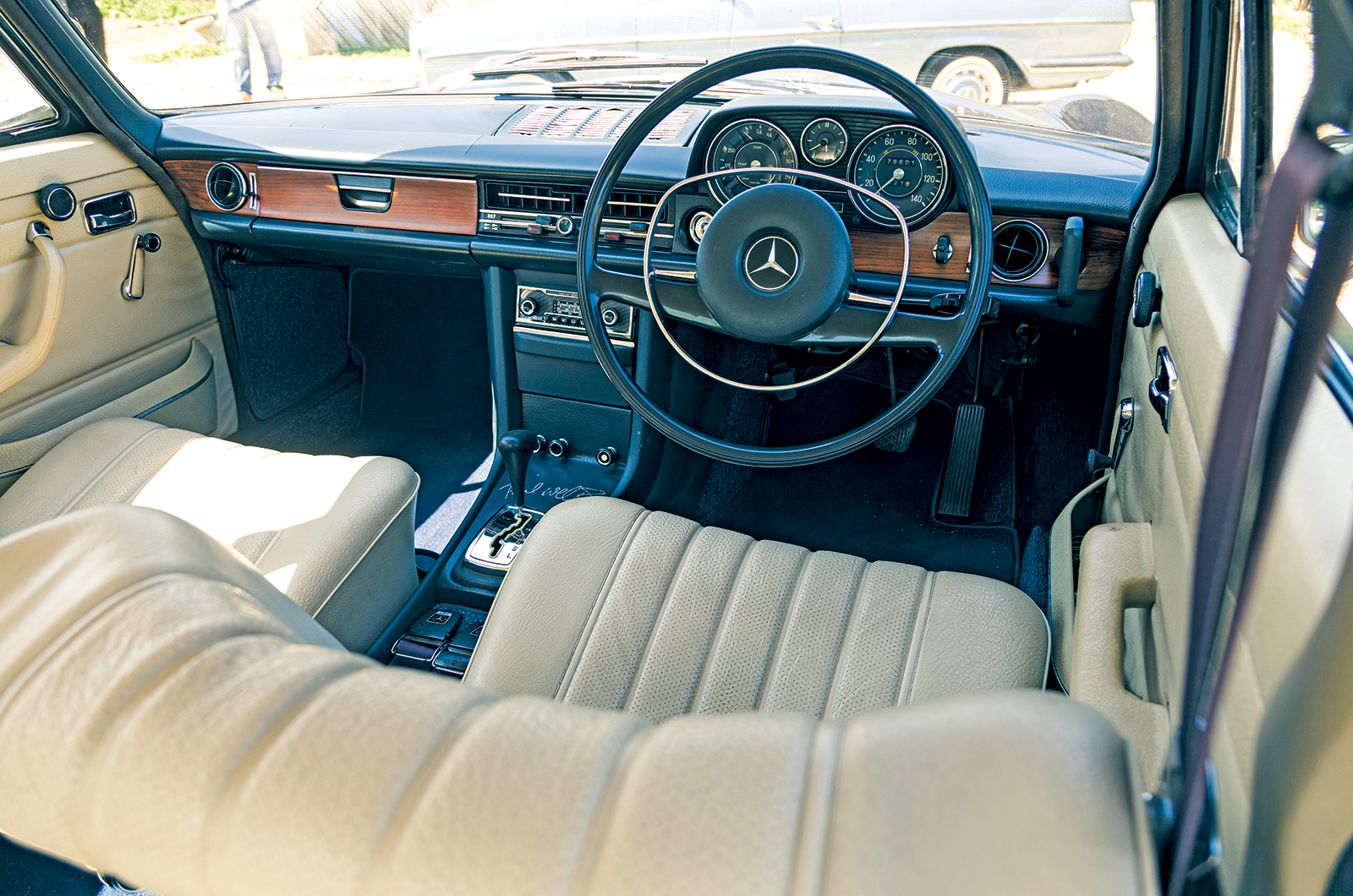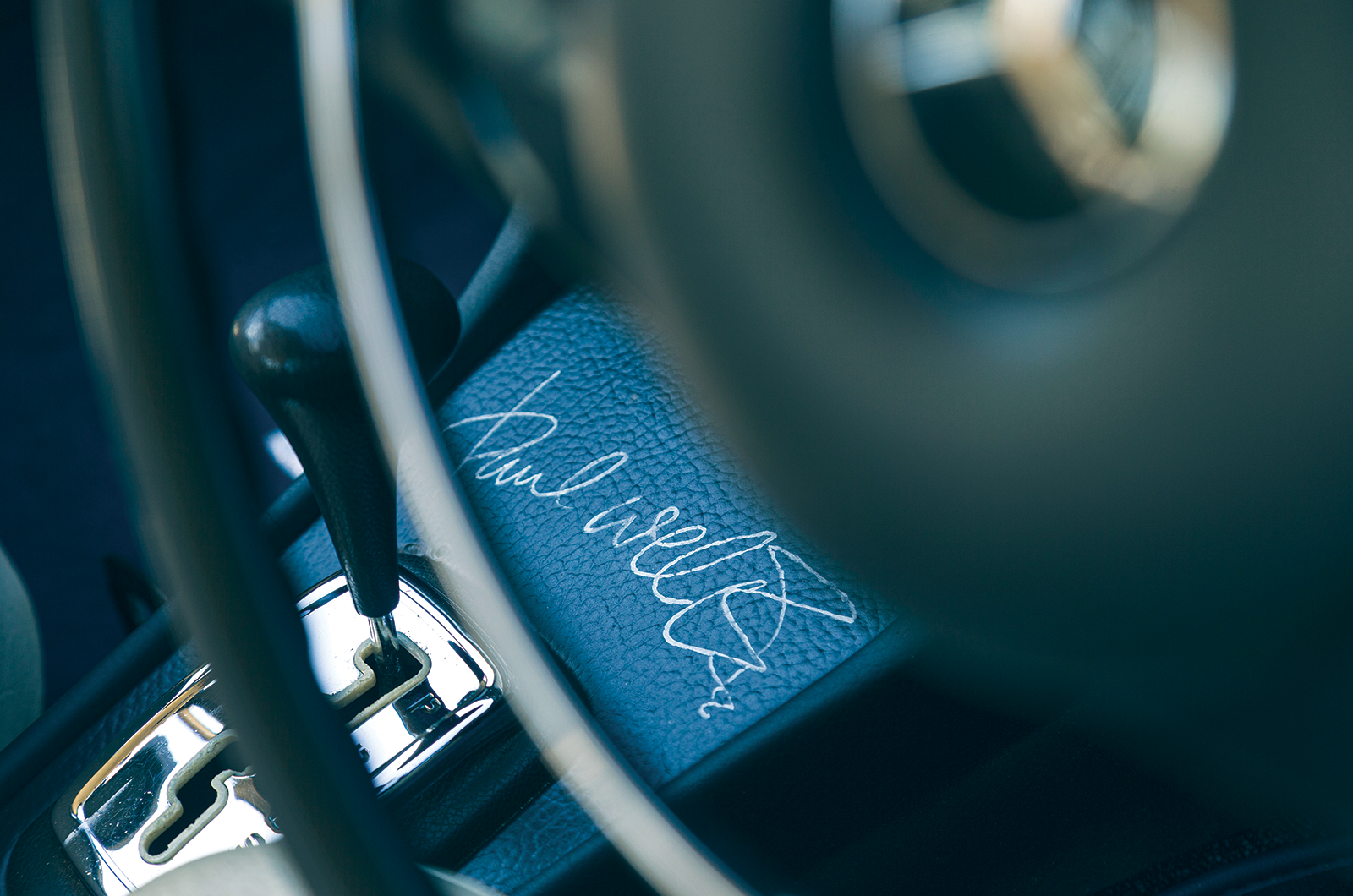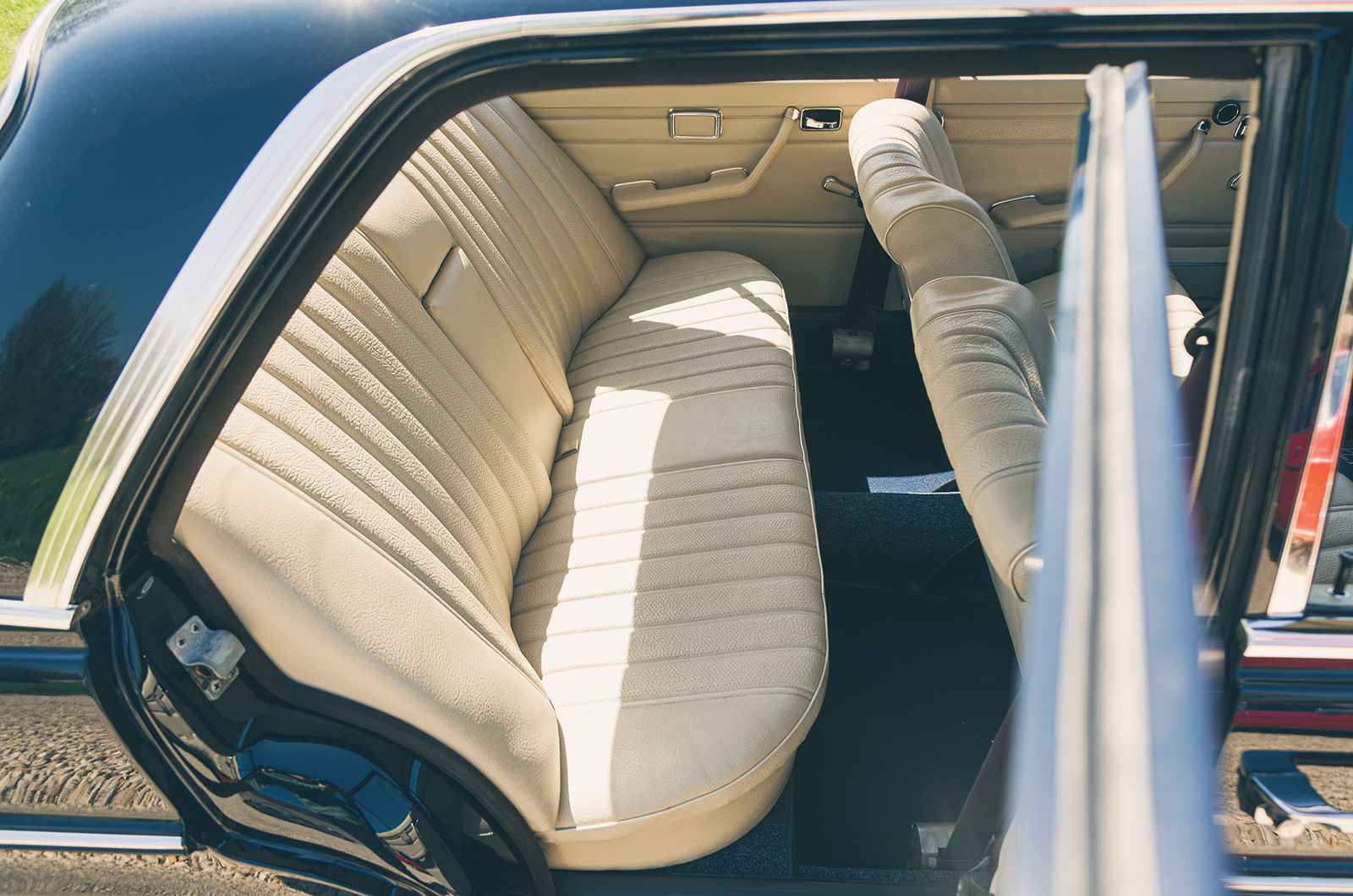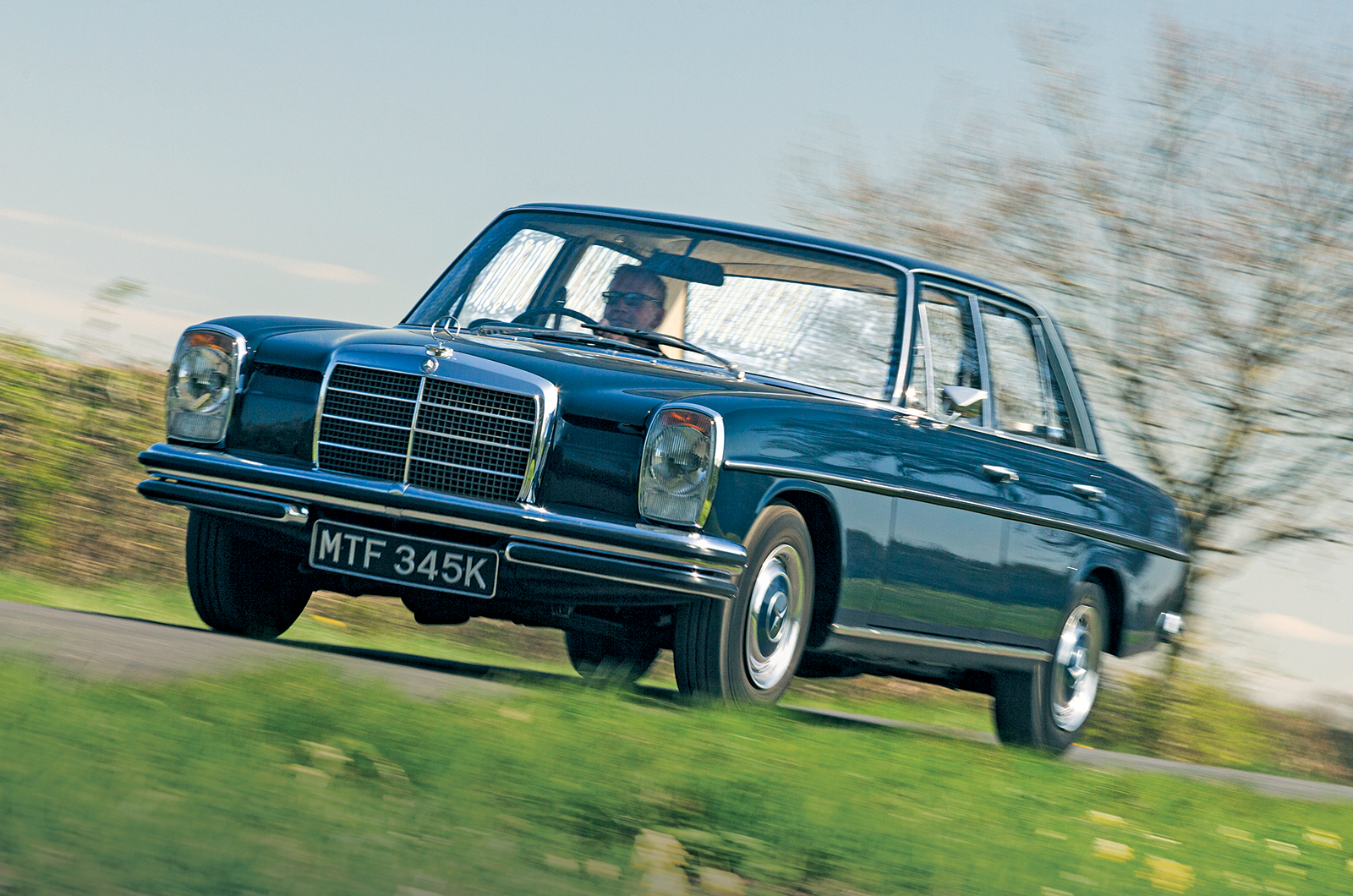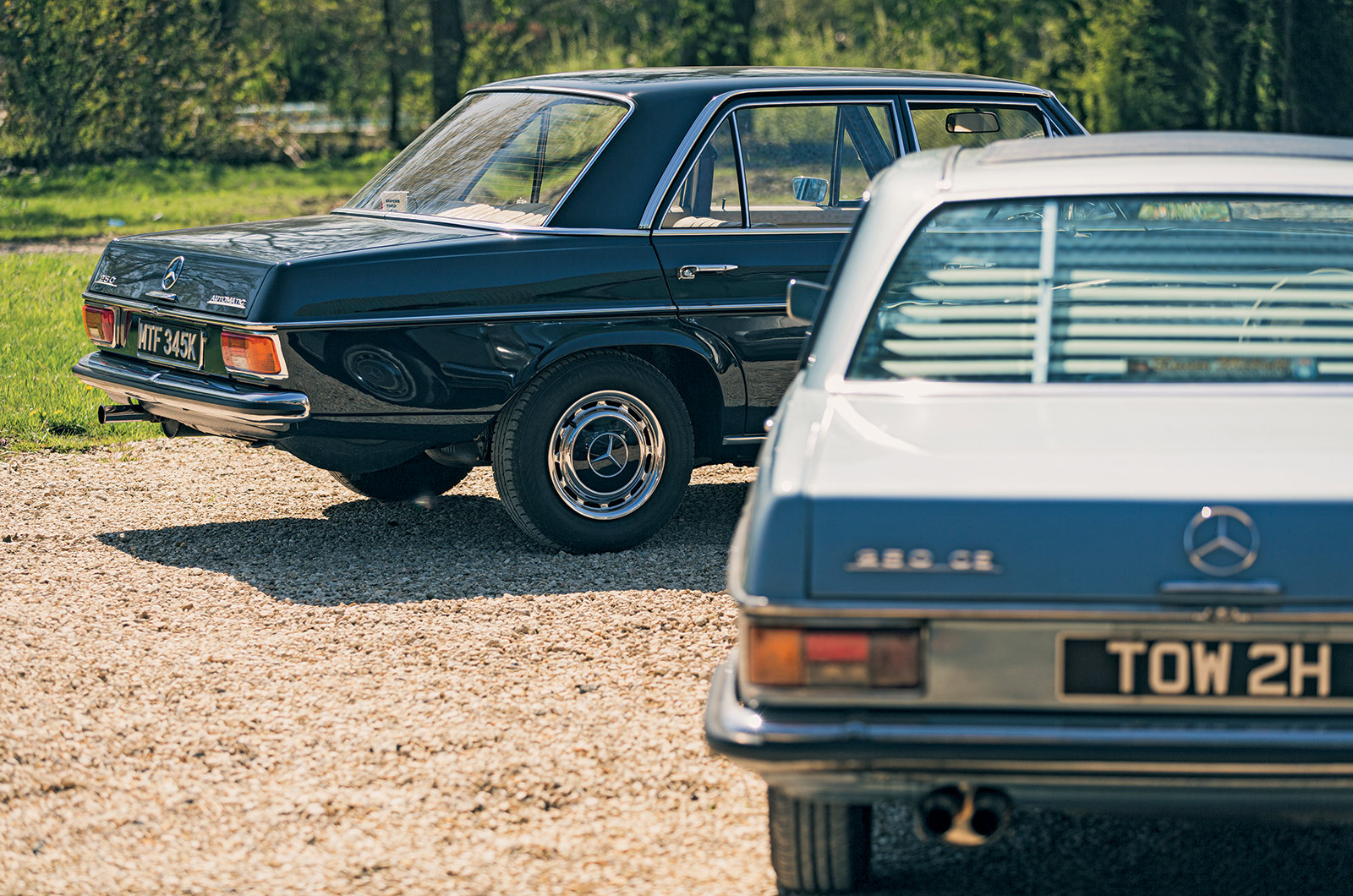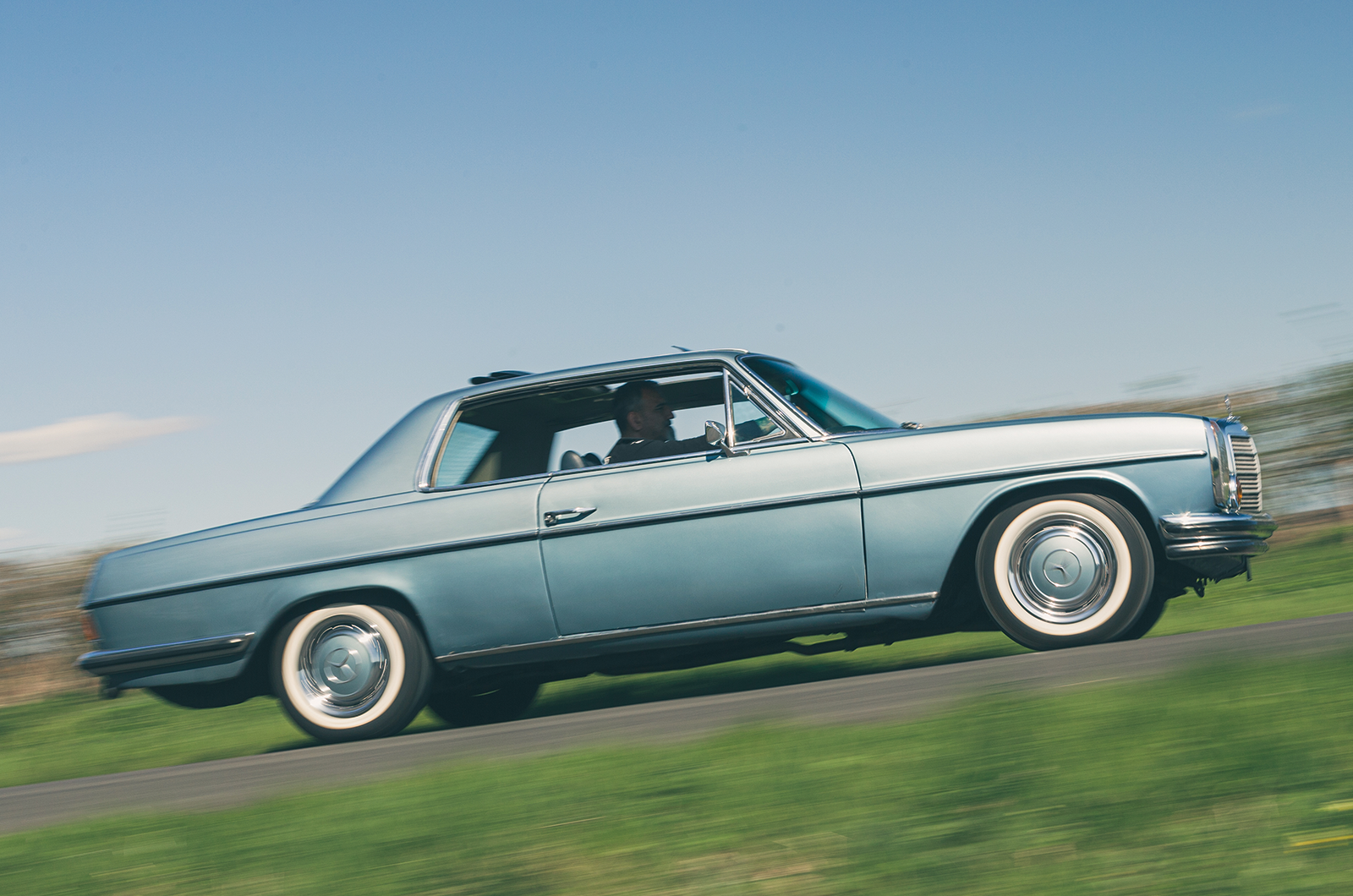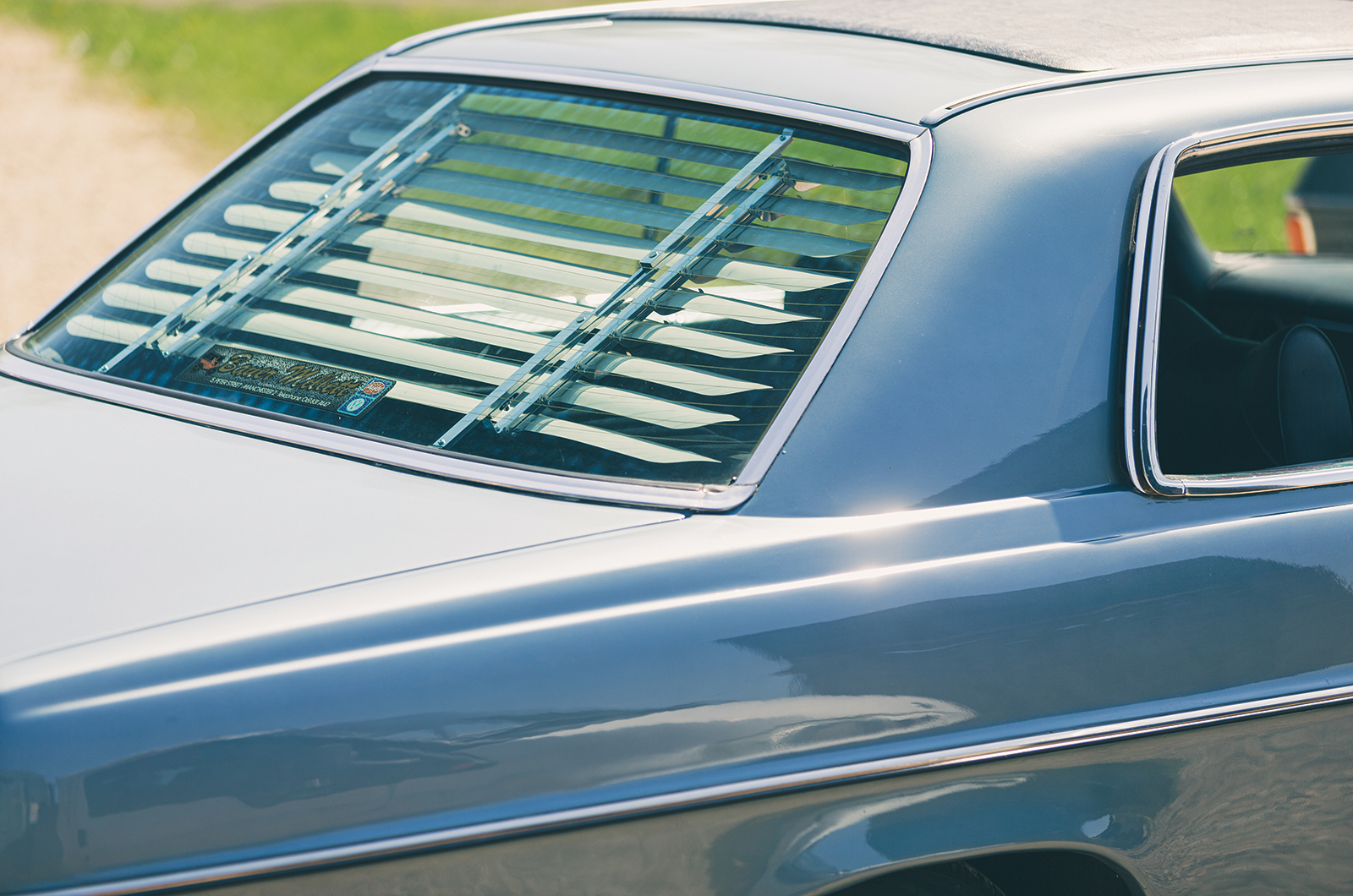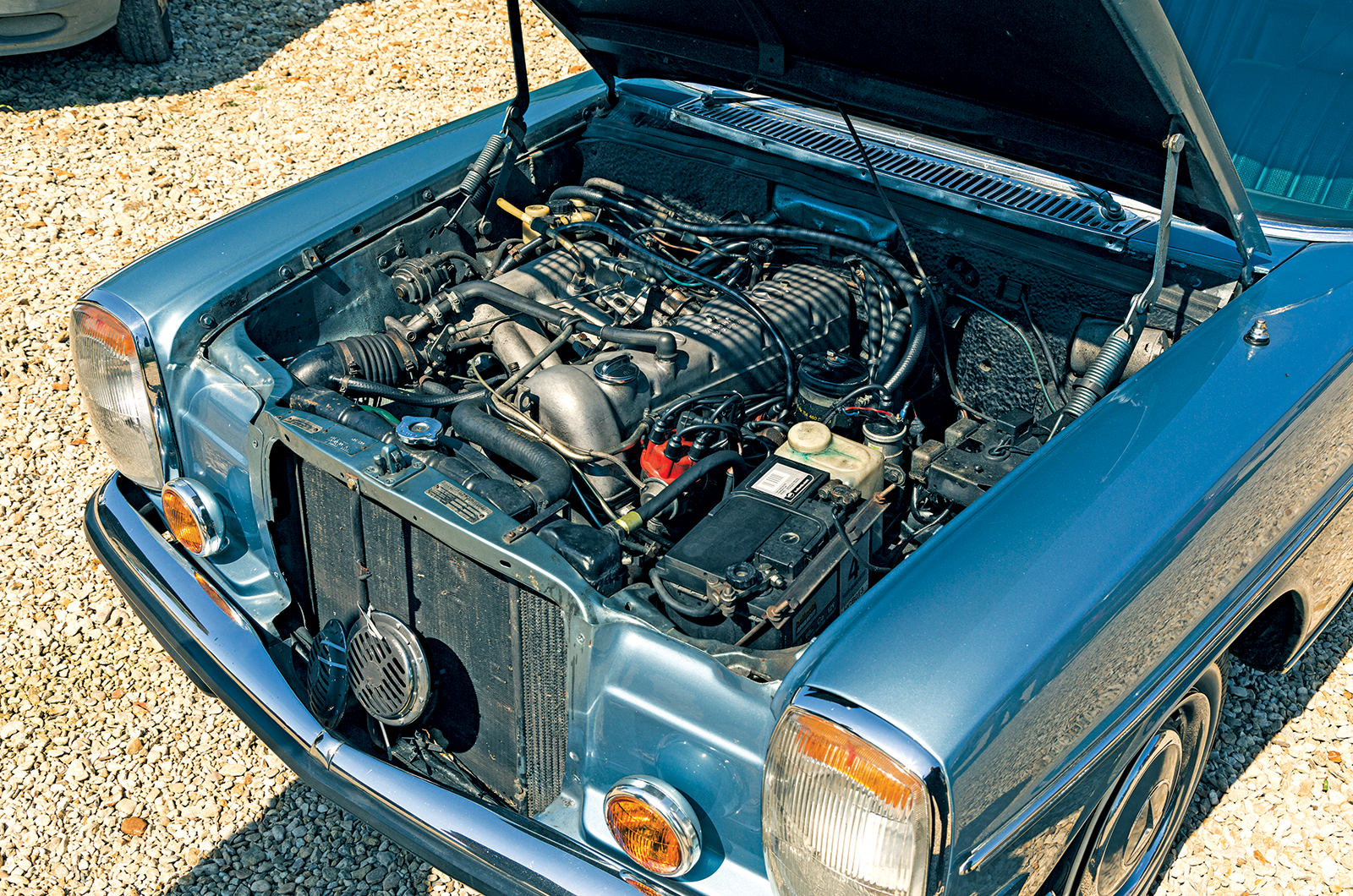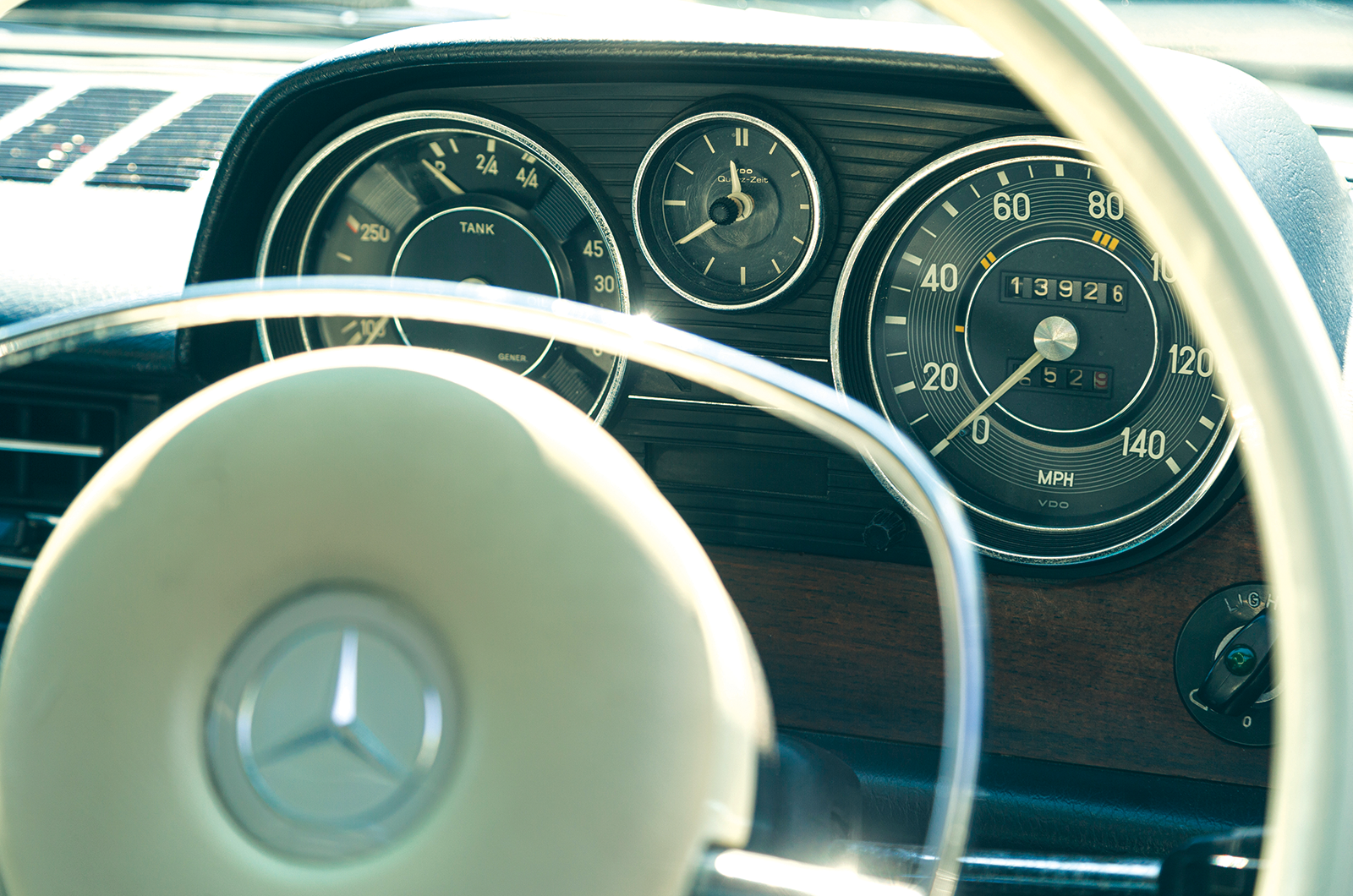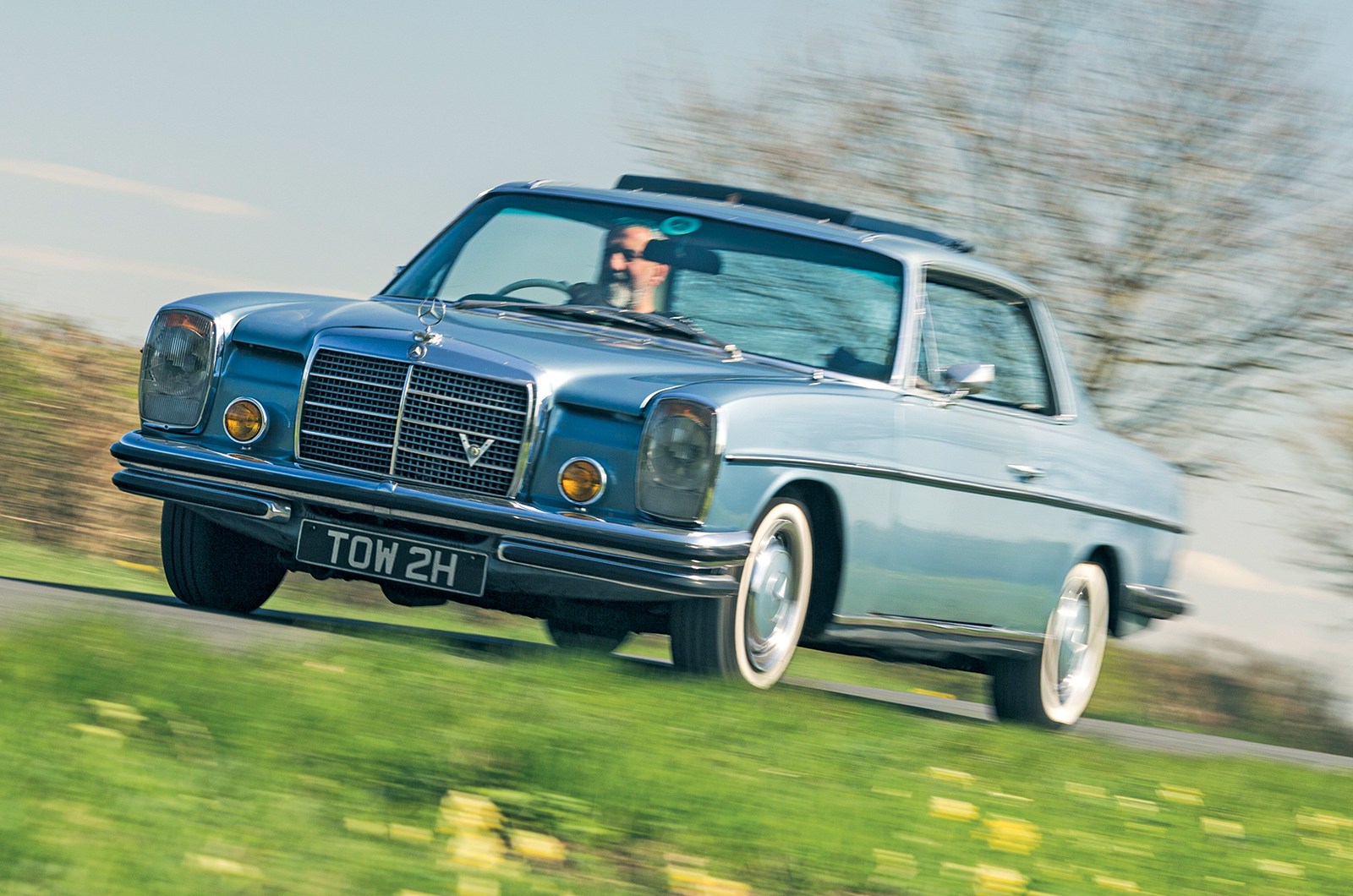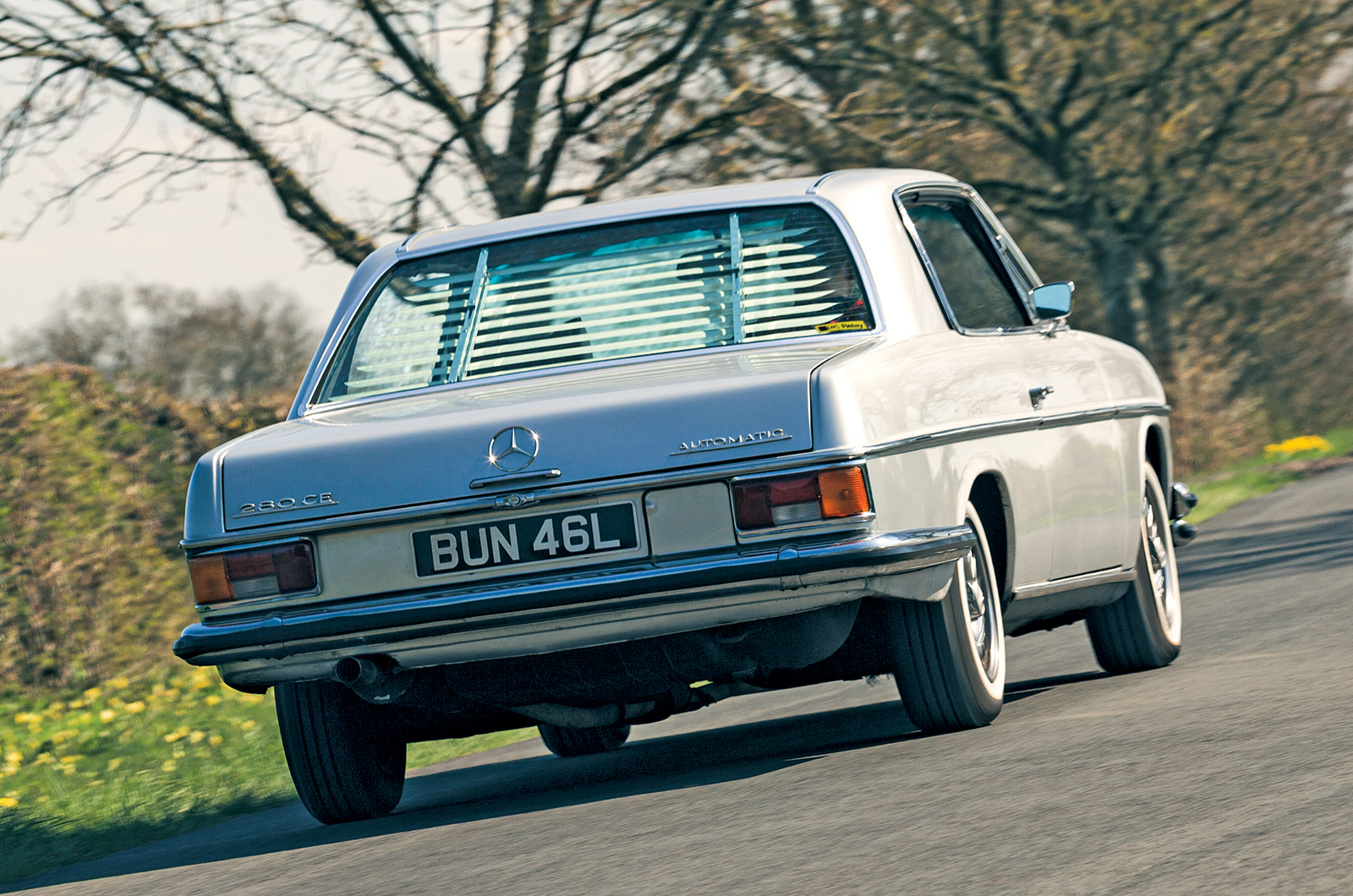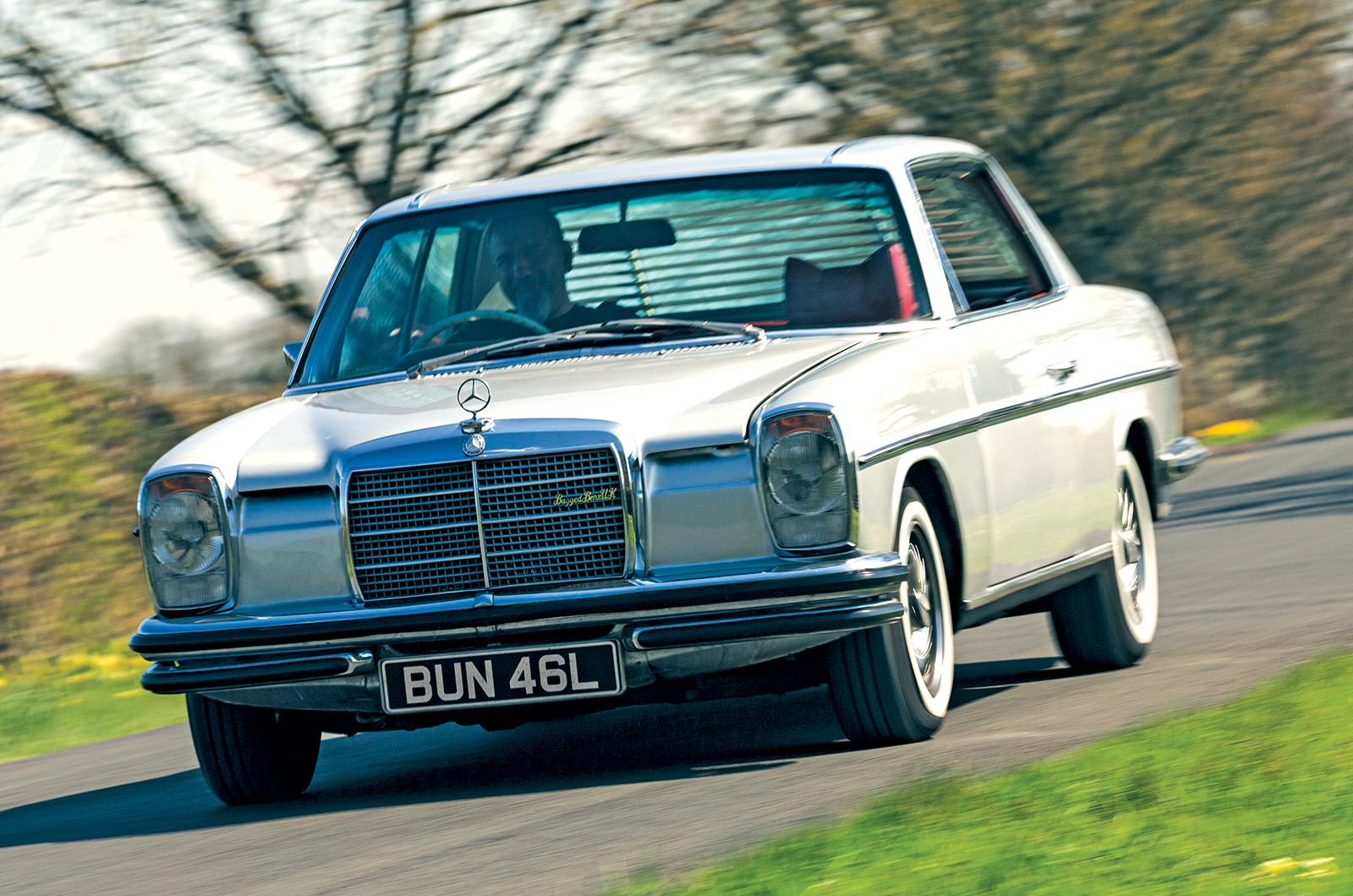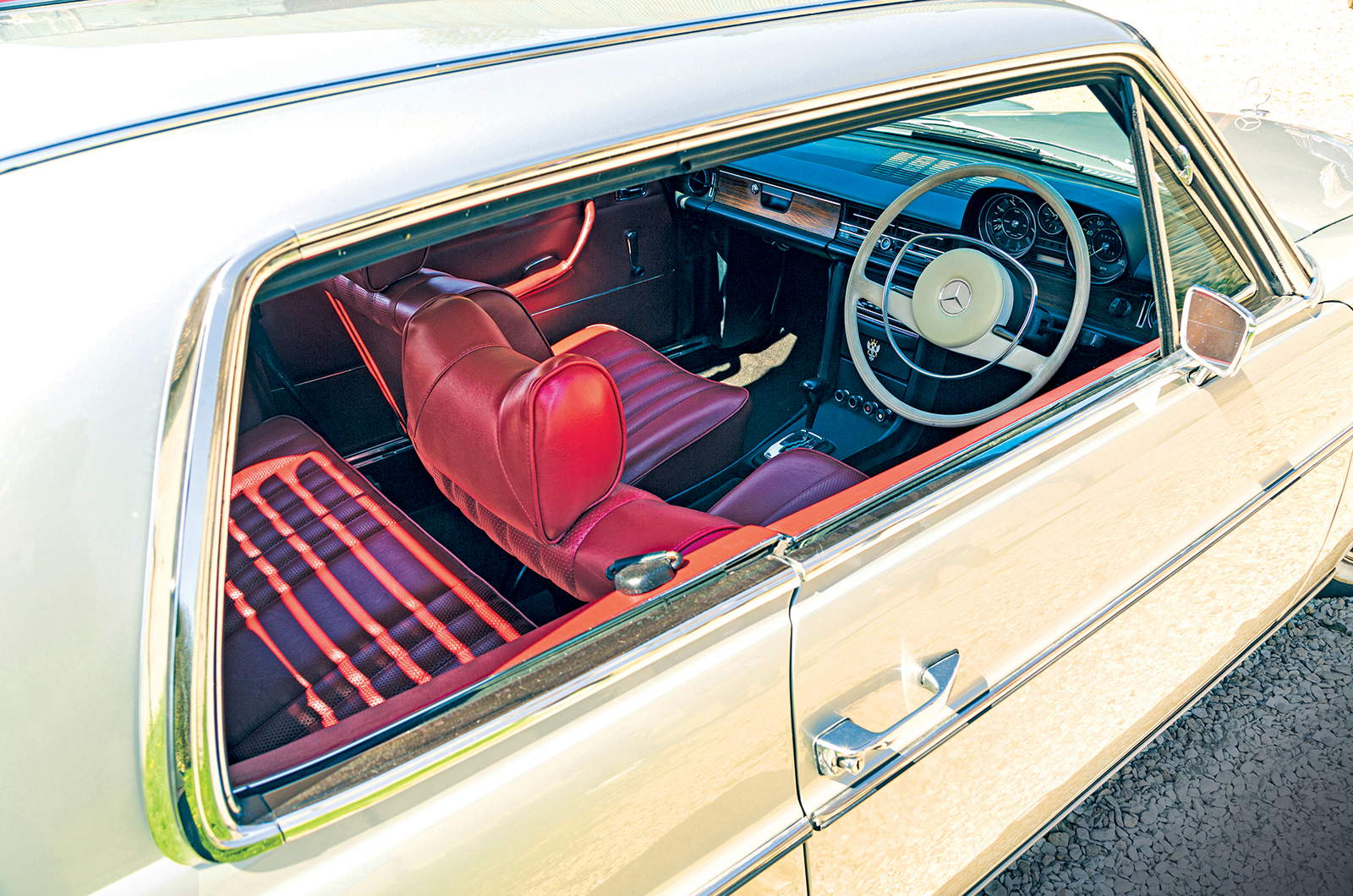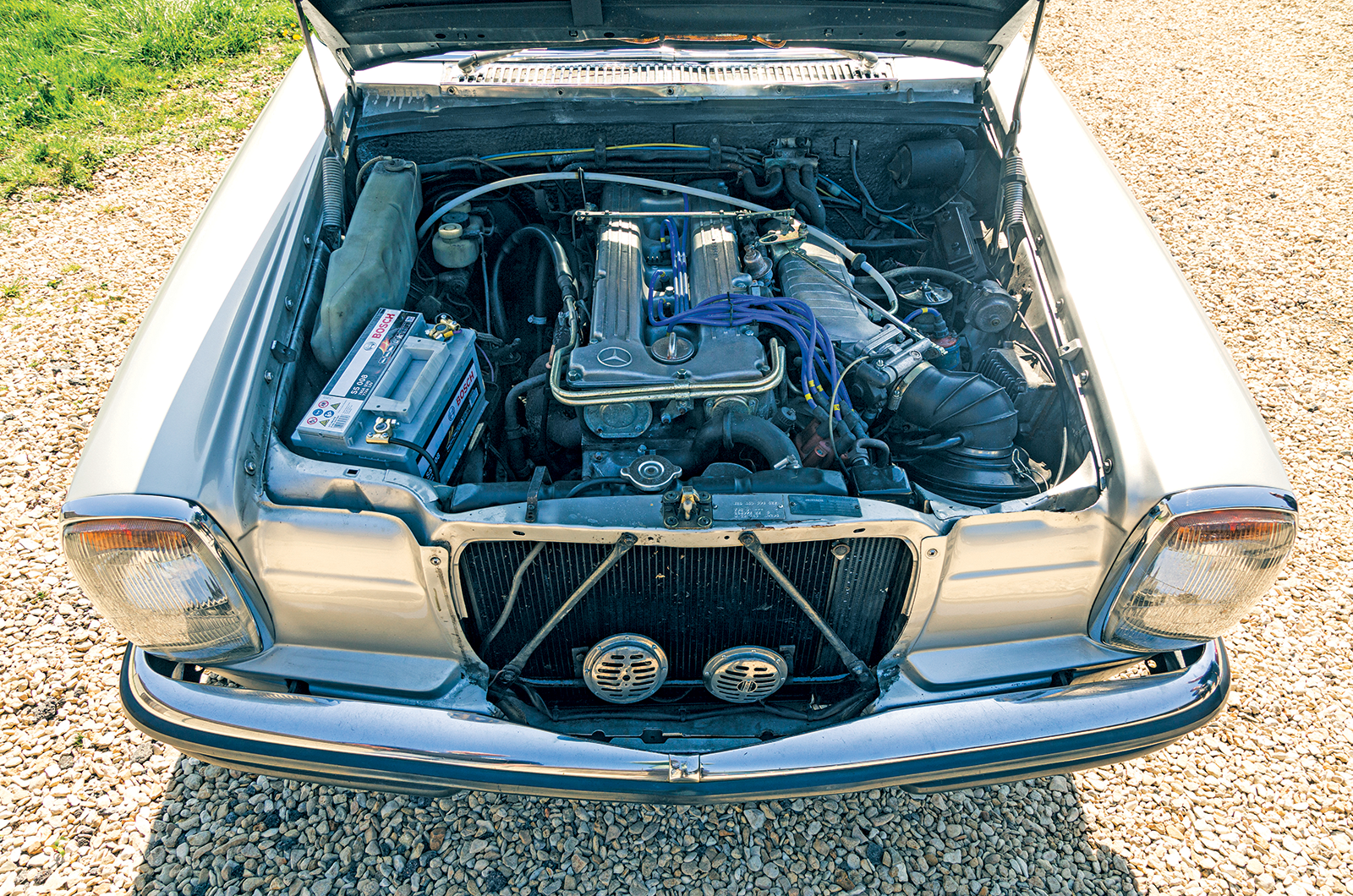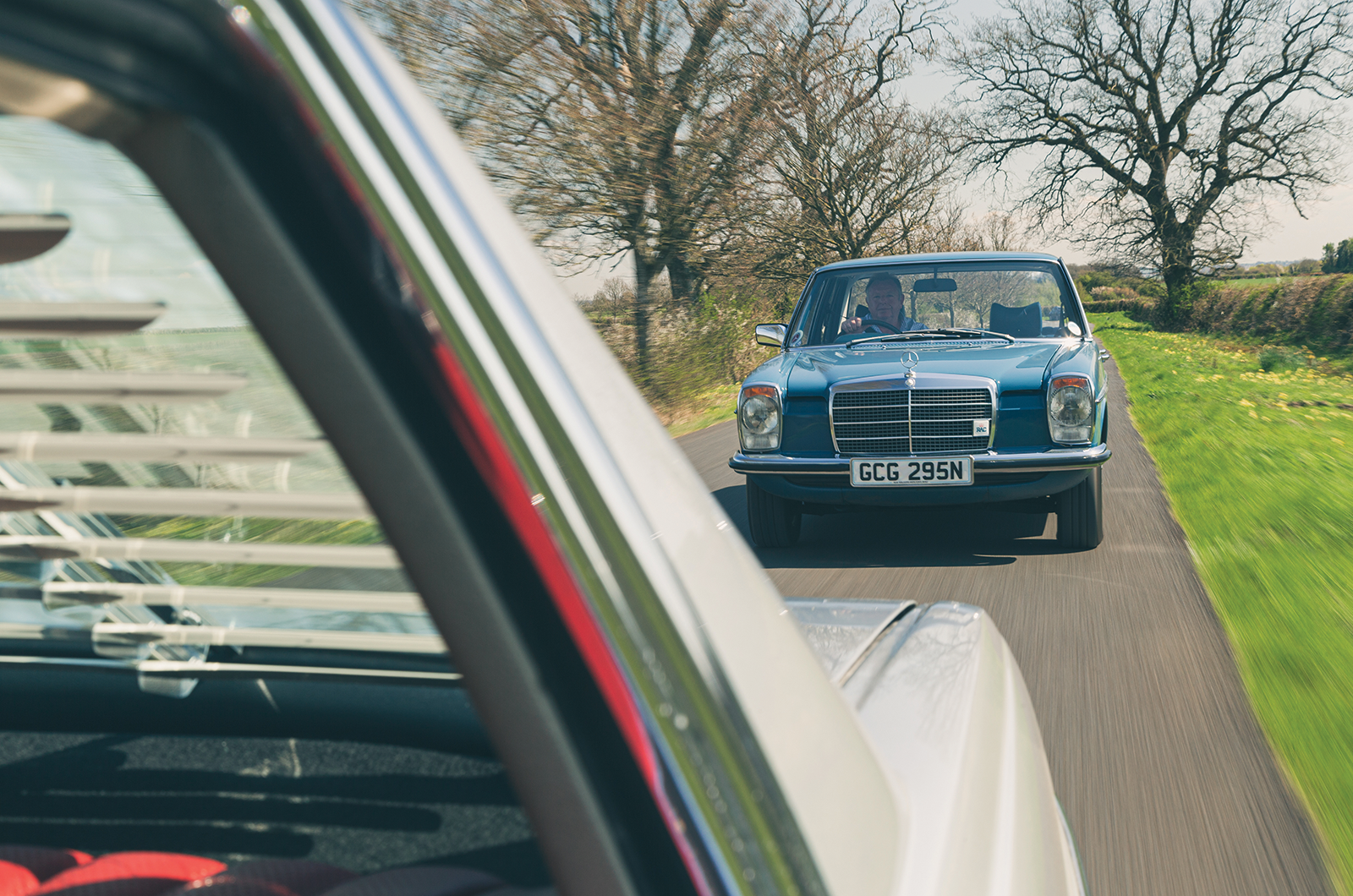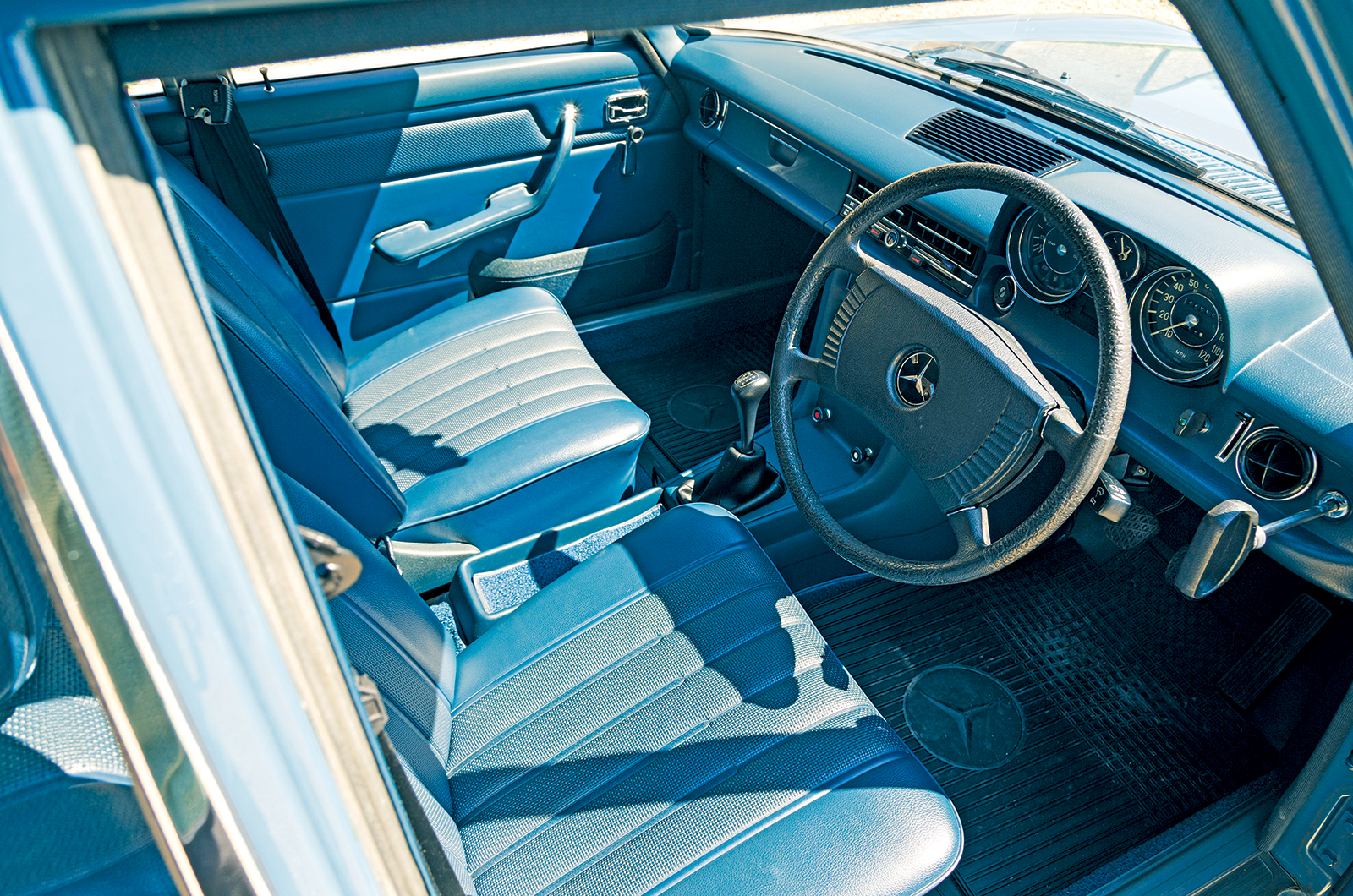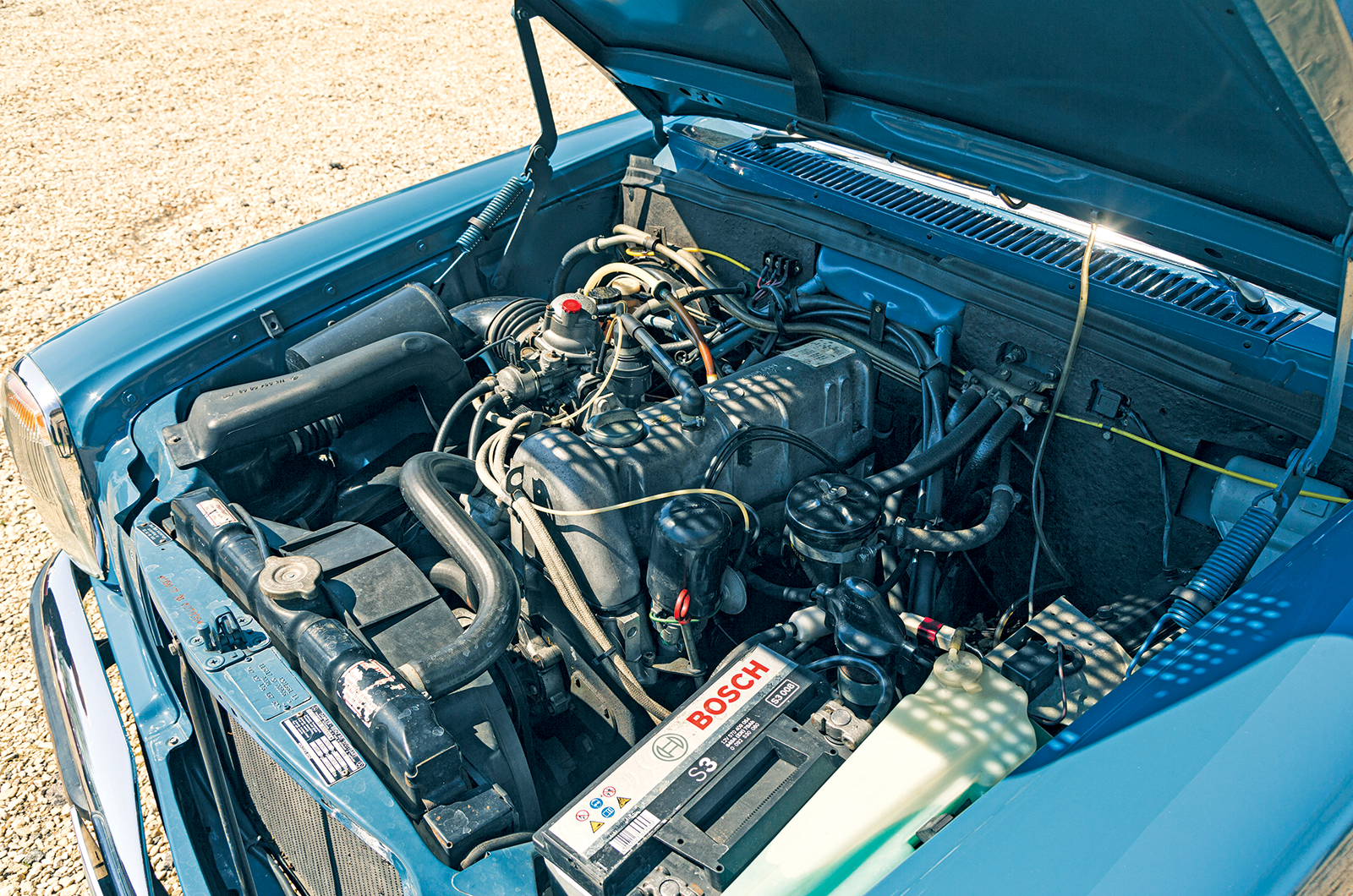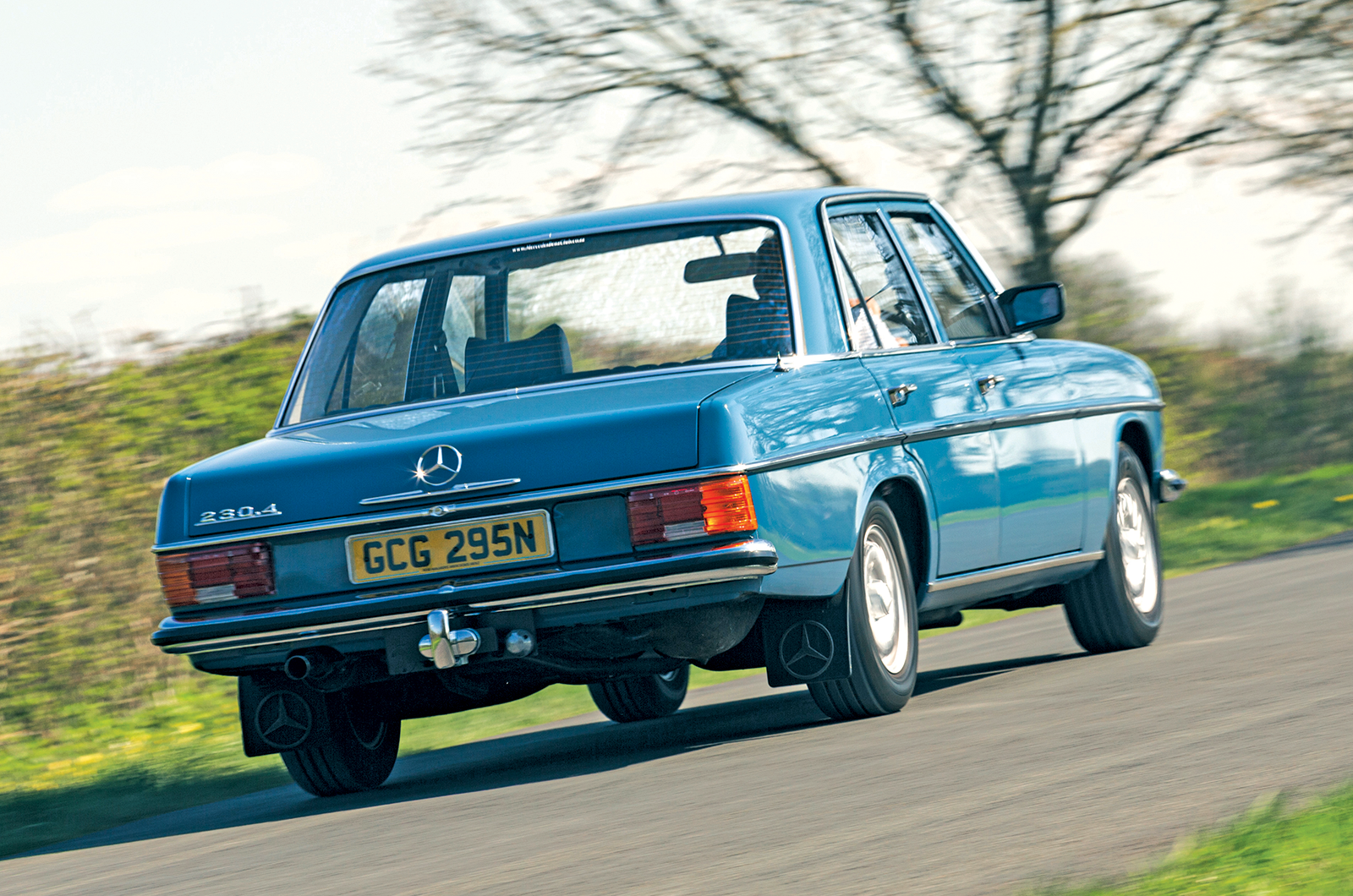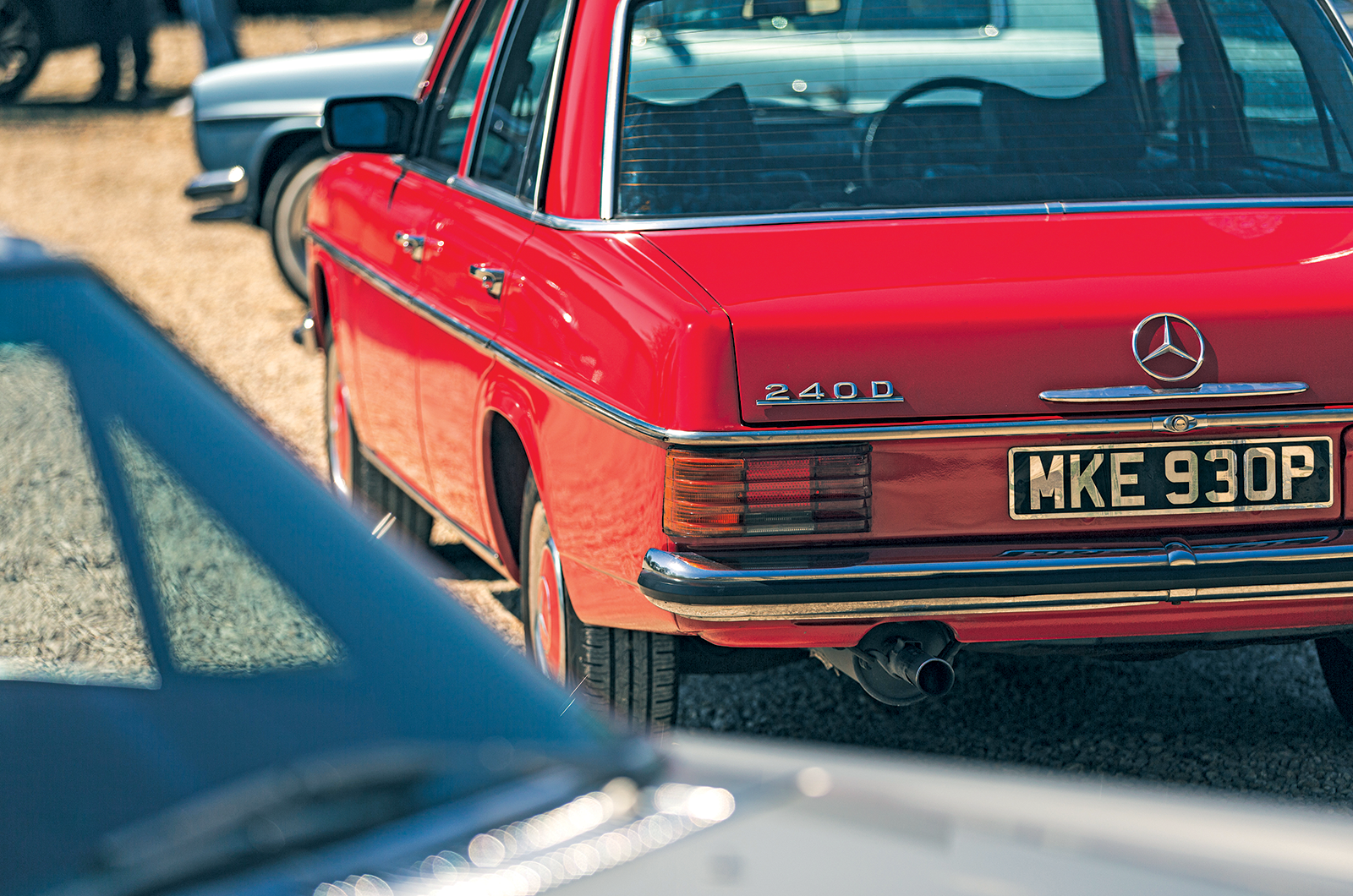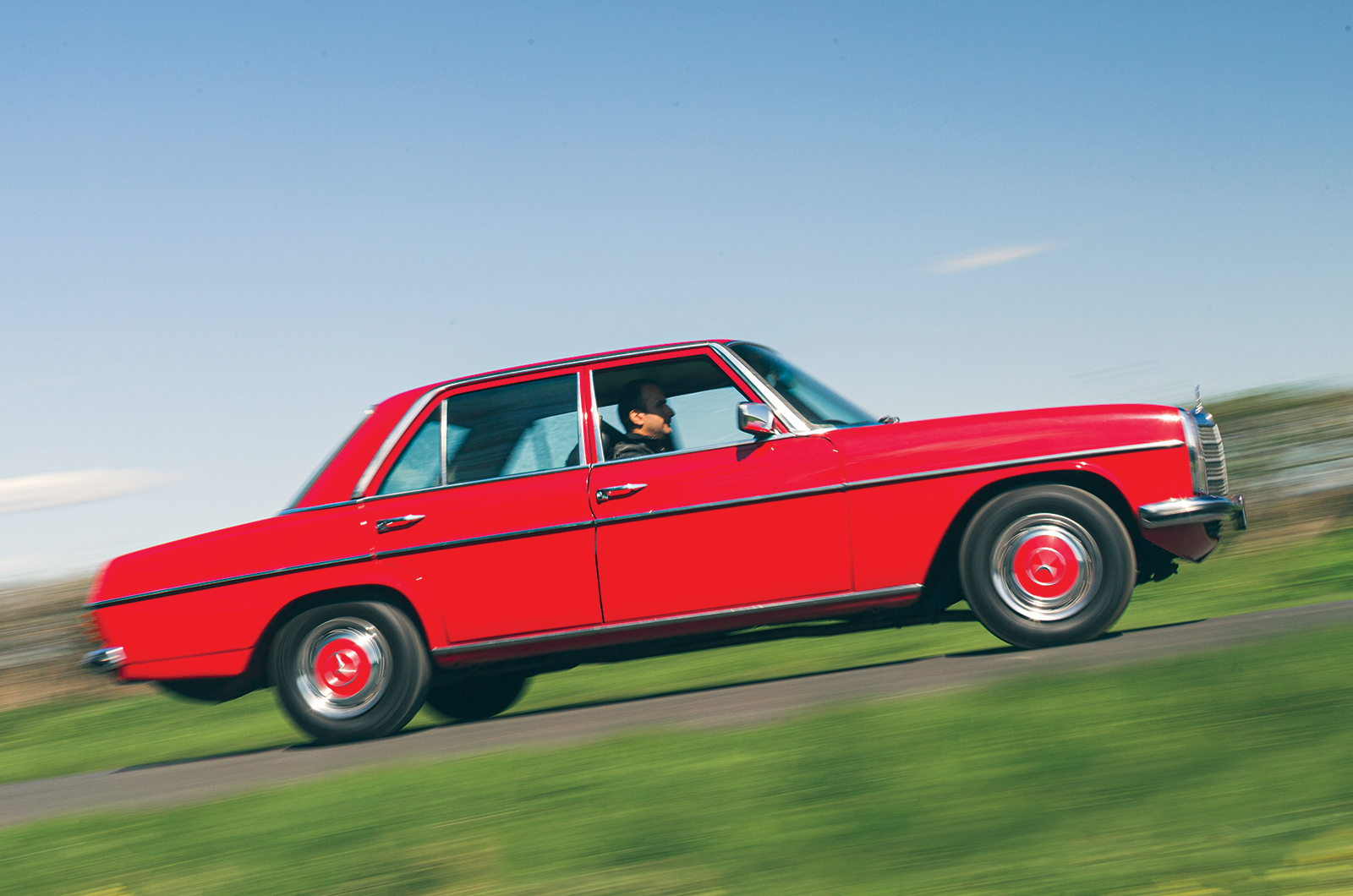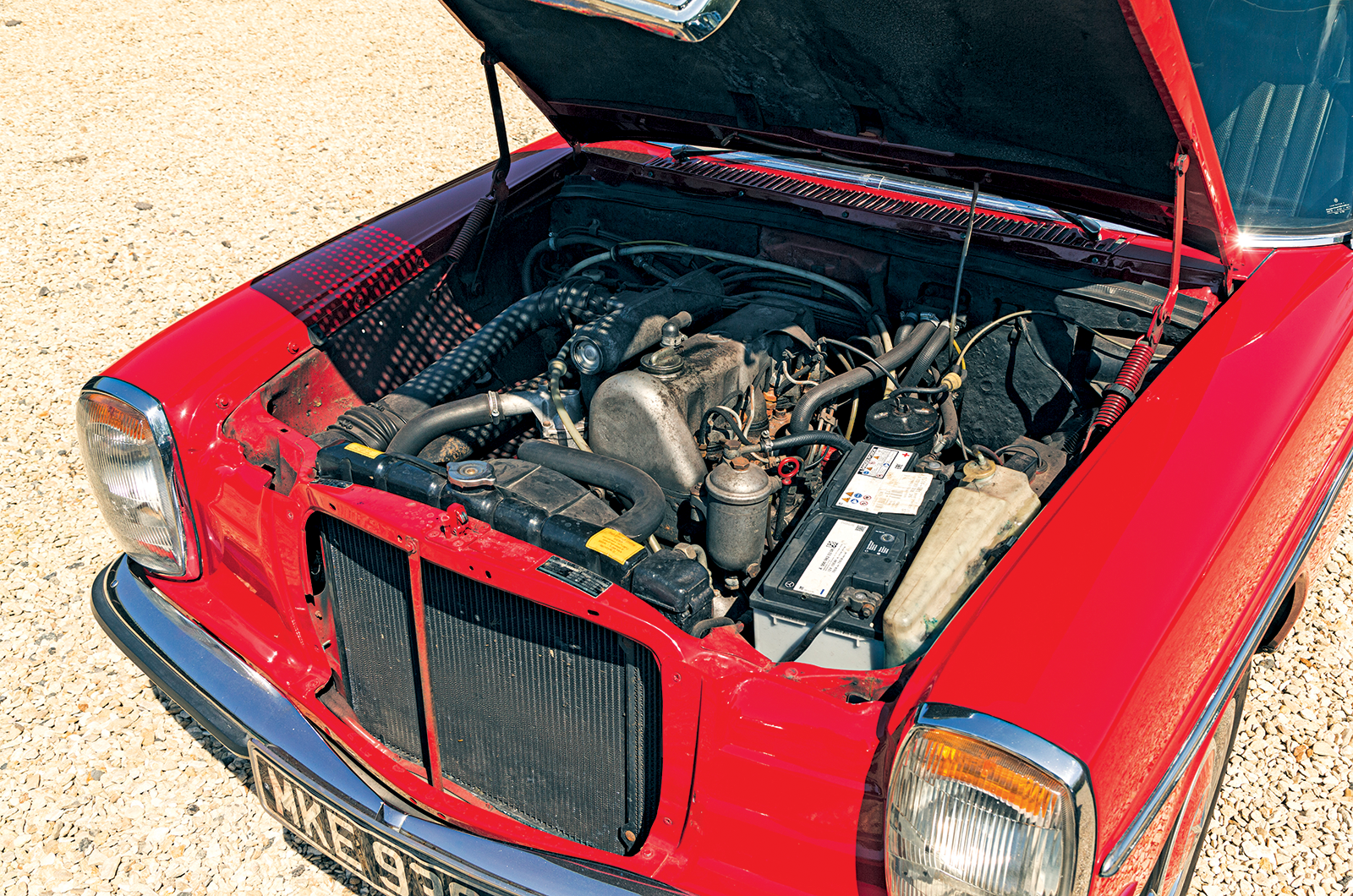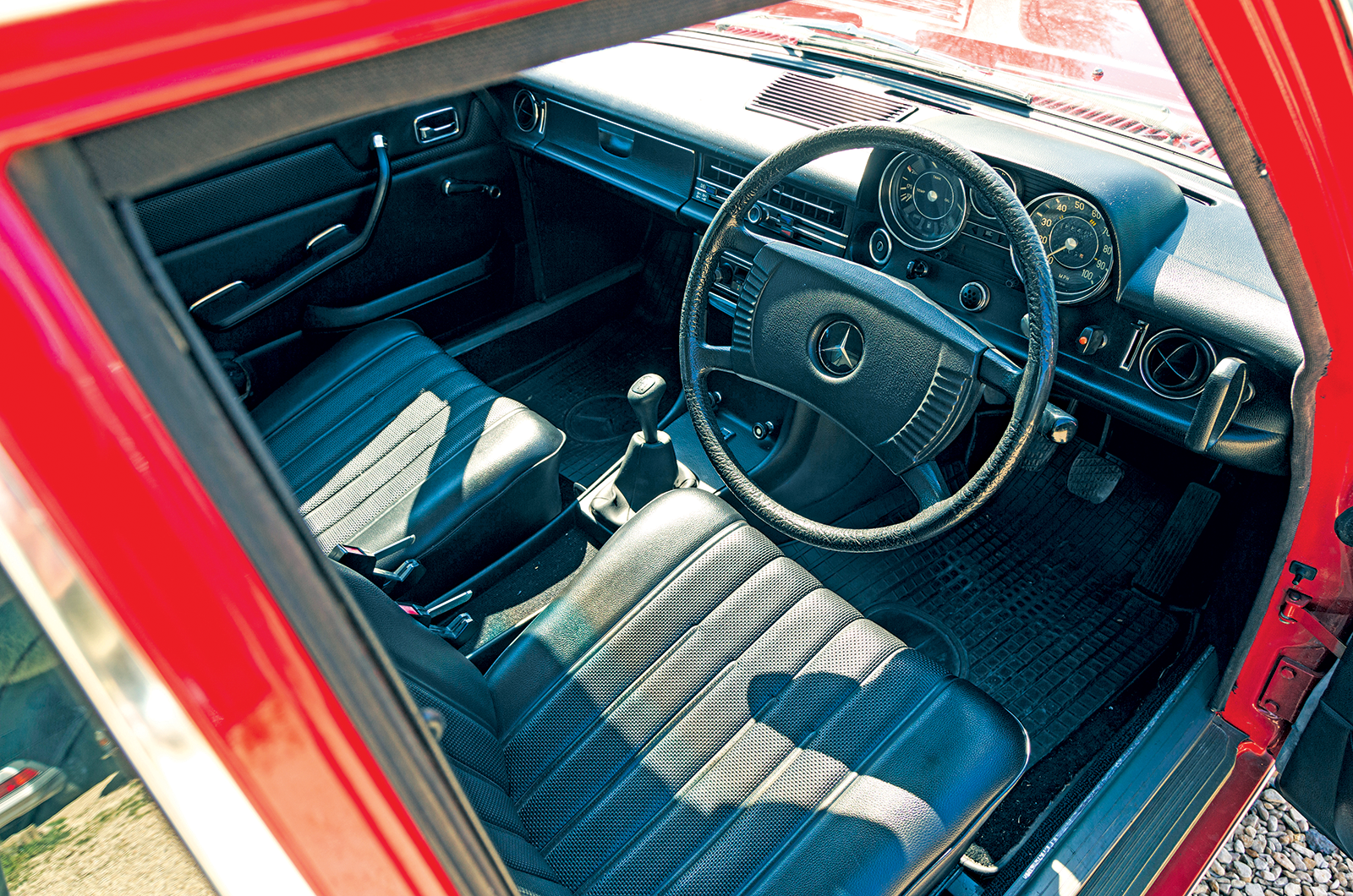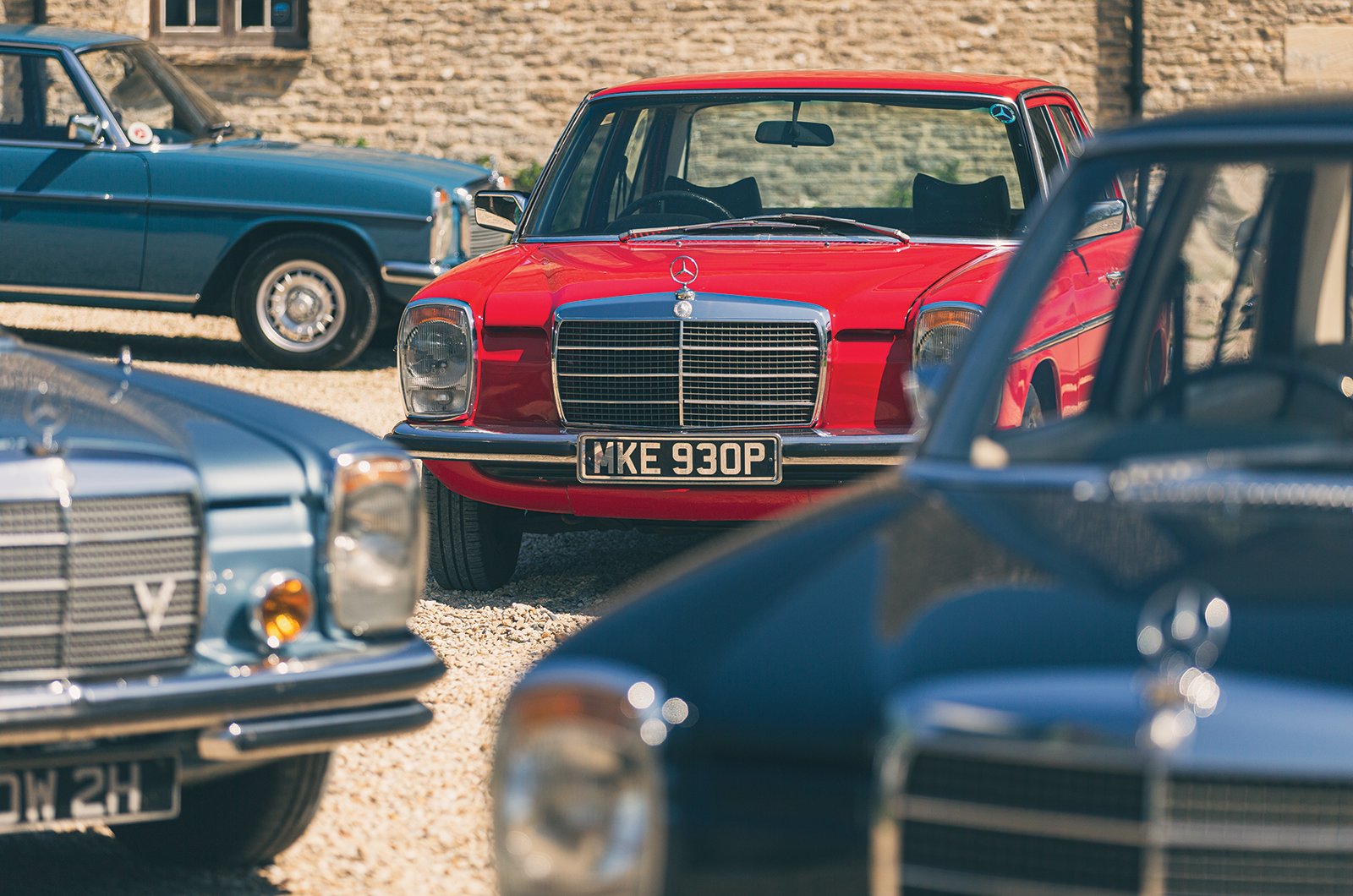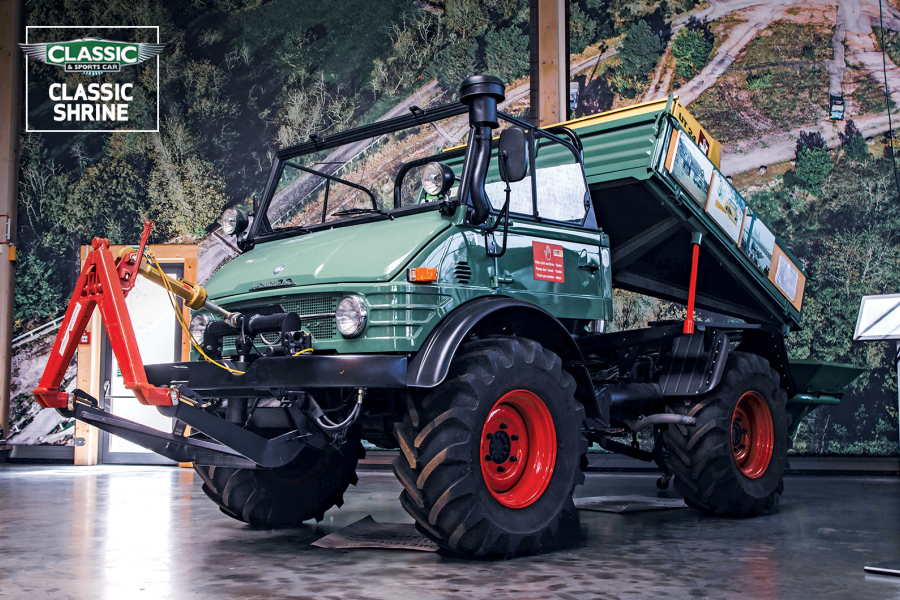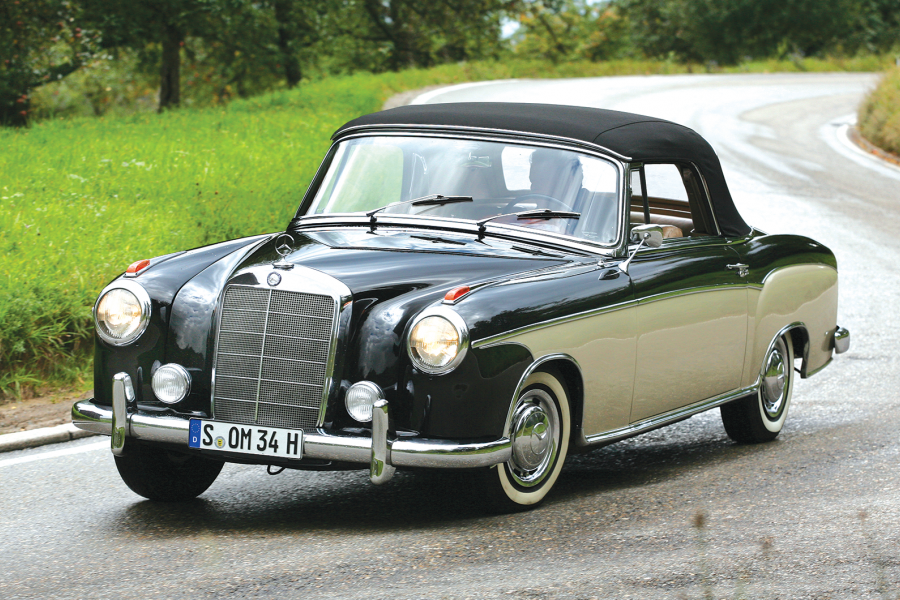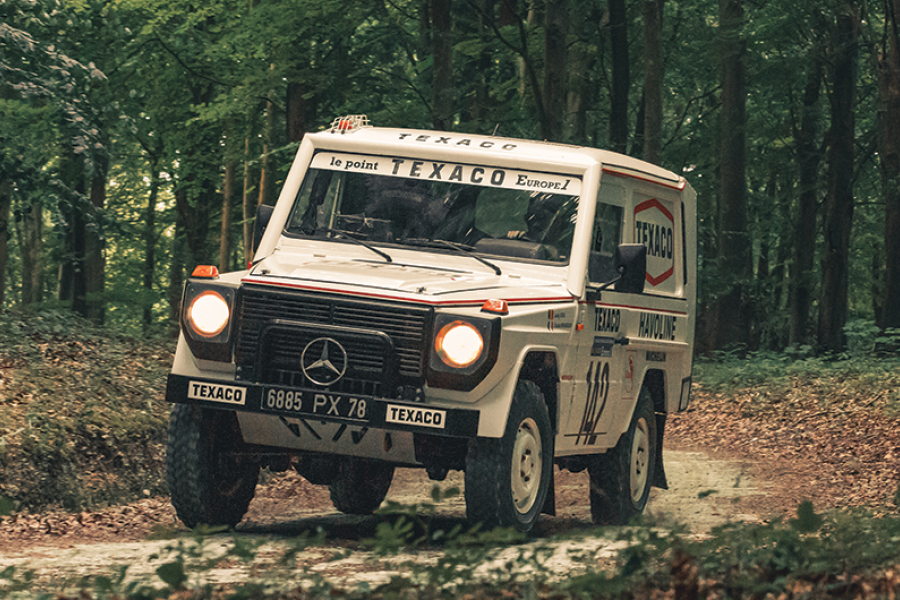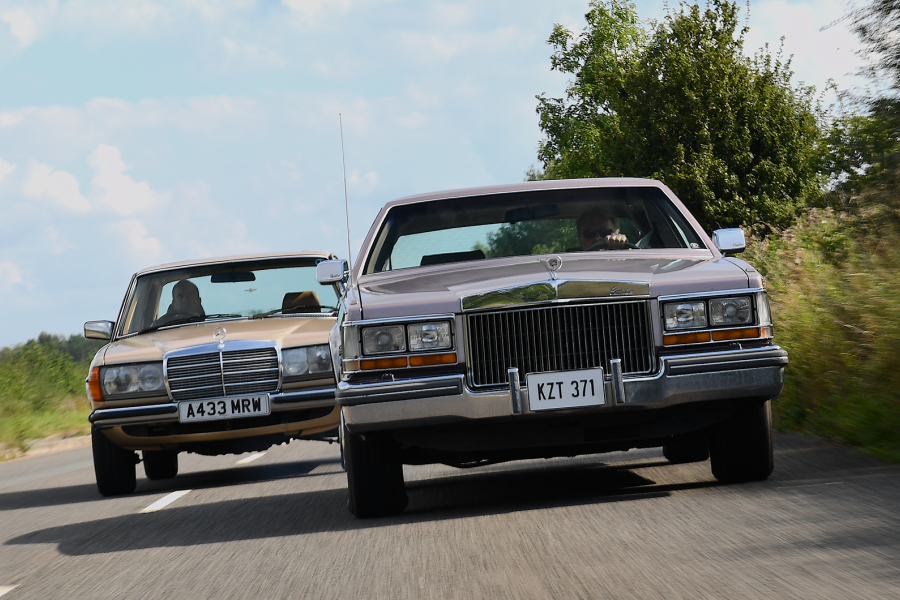Doors that shut as reassuringly as probably any car ever made are common to all versions.
Likewise the lack of rattles, along with excellent power steering and a resilient, if not super-cosseting, ride.
Tony Selini, who brought along his 250 and 280CE two-doors from Yorkshire, first fell in love with the model as a boy growing up in Iraq, where Saddam Hussein’s regime was offering a new W114 saloon – and a house – as a way of persuading the educated middle classes to not leave the country.
The C/CE body, introduced in 1969, was Stuttgart’s first attempt to make a coupé that was less rarefied than the hand-finished, low-volume W111 and W112 models.
The post-facelift Mercedes 230.4 wears a single-piece front bumper but sports few other material changes
The two-doors probably look better today than they did in period, but parts that are unique to these coupés can be hard to find, particularly body panels and rubber seals.
The styling is identical to the four-door up to the base of the windscreen, but the shorter, 1.8in-lower pillarless glasshouse gives the coupé a markedly different overall profile, with a dished roof panel that provides a visual link with the SL’s Pagoda hardtop.
As a payoff for the slightly larger boot and lower-set seating position, you get a touch less back-seat legroom in the coupés, but the long doors at least make it easy to access the rear cabin.
This Mercedes-Benz 230.4’s hard-wearing but unglamorous cabin is spotless
Gordon Blane’s deep respect for these cars began when he saw how they coped with conditions in his native South Africa, where the W114s and W115s were locally assembled.
Gordon bought his spotless 230.4 from its second owner here in the UK.
Being a post-1974 facelifted version it has a wider grille, a lower bonnet line and a single-piece front bumper, plus the ribbed, supposedly ‘self-cleaning’ tail-light lenses that, along with a padded four-spoke steering wheel, gave these later cars a visual relationship with the W116 S-Class.
The four-cylinder overhead-cam motor produces 110bhp
Powered by an oversquare in-line ‘four’ with a Stromberg carburettor and 110bhp, the 230 is an exceptionally smooth and self-effacing car, with excellent torque and performance not far adrift of the 250’s.
It exudes a feeling of competence and capability that makes it seem deceptively ordinary, but you would only have to spend a few minutes in that £1200 1972 Cortina to be disavowed of such a view.
Aviv Screwvala took eight years to find himself a rust-free 240D as a running mate for his ex-Indira Gandhi W123 300D.
The Mercedes 230.4 feels impressively smooth to drive
Having replaced all of the suspension rubbers with genuine Mercedes-Benz parts – and got the all-important fuel pressures spot-on – Aviv now has something close to an ideal ULEZ-dodging 40mpg London classic that in many ways is the most surprising of these cars.
It exceeds just about every expectation – although mine were, admittedly, pretty low.
Firstly, the 2.4-litre engine, while obviously an oil-burner with a 22:1 compression ratio, doesn’t rattle or vibrate excessively.
Once under way – having negotiated the operation of the start/stop knob – you almost forget that you are driving a near-50-year-old diesel.
The Mercedes 240D is disarmingly smooth and vibration-free, and more lively than you might expect, too
The pace builds quite quickly and doesn’t feel laboured.
Like its petrol-engined siblings, the 240D is light and pleasant to handle, with an easy manual gearchange, a light clutch and nicely weighted power steering.
It accelerates very respectably and feels much livelier than you anticipate – or, indeed, than the road testers of the day suggested.
Aviv is adamant that the 240D is better to drive than his 300D in every respect bar its ride quality.
This frugal, diesel-powered classic Mercedes-Benz returns 40mpg
If these days the W123 family tends to get more column inches than its predecessor, it is probably because they remain a more visible presence on the roads; yet in every way this famously rugged example of ‘peak Benz’ was nothing more or less than a tweaked, massaged and reskinned update of the original W114/115 concept, but for wider international tastes.
Born in the 1960s but designed to take on the challenges of the ’70s, the W114/115 was less of an international product than the W123, built to satisfy the tastes of its home audience first and foremost.
Both cars were the result of huge research-and-development resources, but the W123 that followed reaped the benefit of a more concerted worldwide marketing effort that, in an odd way, still works in the model’s favour today.
The manual ’box in this Mercedes 240D works well
Somewhere amongst all this, the appeal and historical importance of the slightly severe and Teutonic W114/115 became lost.
The good news is that they remain, for now, one of the last true bargains of the classic Mercedes world – if you can find one.
The truth is that these otherwise indestructible motor cars rusted away as badly as anything else, which at least goes to prove that even Mercedes-Benz didn’t always get it right.
Images: Luc Lacey
Factfiles
Mercedes-Benz W114/W115 series
- Sold/number built 1968-’76/1.8m
- Construction steel unitary
- Engine iron-block, alloy-head, single carb or injection: sohc 1988/2197/2307cc petrol ‘four’; sohc 2292/2496/2778cc petrol ‘six’; dohc 2746cc petrol ‘six’; 1988/2197/2404cc diesel ‘four’; 3005cc diesel ‘five’
- Max power 55bhp @ 4200rpm to 182bhp @ 6000rpm
- Max torque 93lb ft @ 2400rpm to 175lb ft @ 4500rpm
- Transmission four/five-speed manual or four-speed automatic, RWD
- Suspension independent, at front by wishbones, anti-roll bar rear semi-trailing arms; coil springs, telescopic dampers f/r
- Steering recirculating ball, optional power assistance
- Brakes discs, with servo
- Length 15ft 4½in (4686mm)
- Width 5ft 10½in (1791mm)
- Height 4ft 9in (1448mm) [C/CE: 4ft 7in (1397mm)]
- Wheelbase 9ft ¼in (2750mm)
- Weight 2978-3324Ib (1351-1508kg)
- Mpg 39/17 (220D/280E)
- 0-60mph 27 secs/10.1 secs (220D/280E)
- Top speed 82-125mph
- Price new £2296/£7102 (220D, 1969/280CE, 1976)
- Price now £5-30,000*
*Prices correct at date of original publication
Enjoy more of the world’s best classic car content every month when you subscribe to C&SC – get our latest deals here
READ MORE
Mercedes-Benz W123: some things were built to last
Glamour models: Mercedes-Benz 280SE 3.5 Coupé vs Rolls-Royce Silver Shadow MPW
Your classic: Mercedes-Benz 280SL
Martin Buckley
Senior Contributor, Classic & Sports Car
